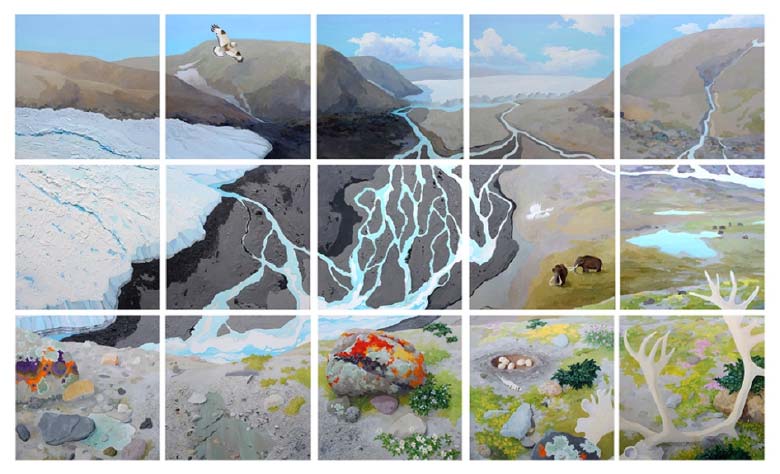The Bowers Science Museum is an academic and public space for students, faculty and visitors to the SUNY Cortland campus. The museum exhibits informative displays that inspire and educate through discovery and appreciation of the natural world. It highlights the four science departments at the College: biological sciences, chemistry, geology, and physics and includes exhibits on molecular biology, evolution, chemistry, prehistoric life, geology and physics as well as a digital planetarium.
Open to the public and free of charge, the Bowers Science Museum is registered and chartered with the New York State Education Department. The museum space in the lobby of Bowers Hall was renovated in 2015 and department exhibits were completed in 2017.
Exhibits
- An interactive large-screen periodic table of the elements
- The rocks and minerals of central New York and the Adirondack Mountains
- Marine fossils from the Devonian of central New York
- New York’s ice age, including mammoth, mastodon and saber-toothed cat fossils
- The evolution of birds
- Modern microscopy
- Molecular biology
- Conservation biology, highlighting endangered, threatened and extinct species
- The geology and development of shale gas in New York
- Working seismograph station and exhibit on earthquakes
- Vintage and antique instruments of measurement, observation and computation

A 15-panel acrylic and mixed media mural mounted on the north wall of the museum depicts the view from the location of Bowers Hall on College Hill north to the Tully Valley about 17,000 years ago in the latter part of the ice age of the Pleistocene Epoch. Shown is the impressive front of the retreating glacial ice sheets, natural landscape of tundra and glacial meltwater populated with flora and fauna that would have existed in the region during this glacial epoch.
The science museum is also home to SUNY Cortland’s full-dome planetarium, featuring state-of-the-art graphic projection. The planetarium provides educational programs and shows about astronomy and the night sky.